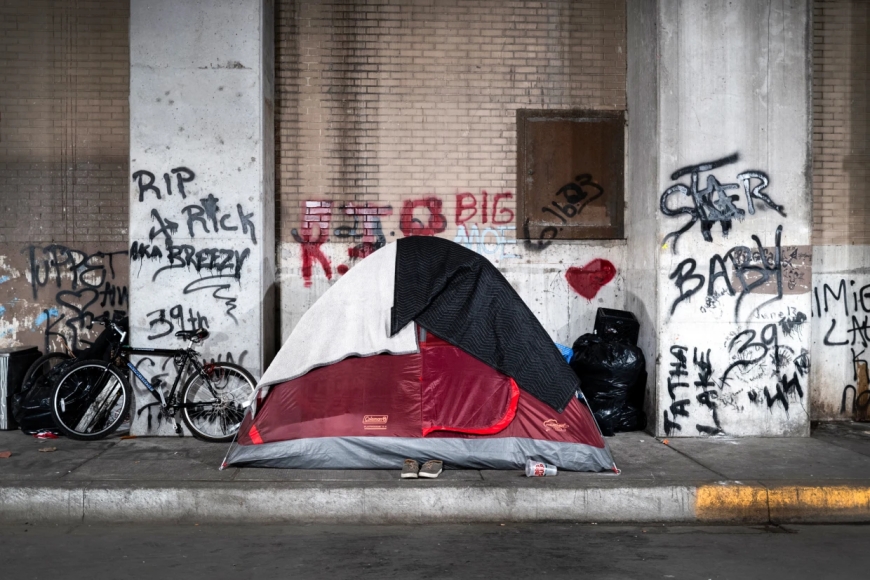Chicago Faces Surging Homelessness Amid Influx of Migrants

Chicago is grappling with a significant rise in homelessness, with nearly 19,000 individuals without permanent housing as of January, marking a threefold increase from the previous year. This surge is primarily attributed to the arrival of thousands of migrants needing shelter, according to a recent city survey.
The annual survey, which offers a snapshot of homelessness in Chicago on a single night, reported that 18,836 people were without permanent housing on January 25, compared to 6,139 the year before. This data is based on the Department of Housing and Urban Development's definition of homelessness, encompassing both unsheltered individuals and those living in shelters.
A significant portion of this increase is linked to the arrival of new migrants, many of whom face delays in obtaining work permits—if they qualify at all—hindering their ability to secure housing.
Despite ongoing efforts to prevent and end homelessness, the rising numbers highlight an intensified need for housing and homeless services, not only in Chicago but nationwide, stated Maura McCauley, Managing Deputy Commissioner of the Chicago Department of Family and Support Services.
The survey revealed that 13,679 new arrivals were living in Chicago’s shelters on the survey night, a steep rise from 2,176 the previous January. Additionally, there were 212 migrants living unsheltered this year, up from 20 last year.
"This significant increase reflects the hardships faced by both the migrants and the city," said Doug Schenkelberg, Executive Director of the Chicago Coalition for the Homeless. He noted that the city, Cook County, and the state have been working to bolster resources in response to this unprecedented influx. Since 2022, approximately 43,058 migrants have arrived in Chicago, many sent from Texas as part of Governor Greg Abbott's initiative to relocate individuals to Democratic cities nationwide.
"In January, we were sheltering close to 14,000 asylum-seekers from the southwest border," McCauley said. "This demonstrates our capacity to add shelter beds swiftly. Most asylum-seekers were sheltered, preventing a more significant increase in the unsheltered population."
Beyond the migrant influx, homelessness among non-migrants also rose. The survey indicated that the number of homeless individuals outside the migrant population increased to 4,945 from 3,943 the previous year. This includes 3,523 people in shelters and 1,422 unsheltered individuals, compared to 2,973 in shelters and 970 unsheltered the previous year.
"That 25% increase is deeply concerning," Schenkelberg remarked.
The city attributed the rise in non-migrant homelessness to expanded winter bed access, new programs, increased shelter bed capacity, and more people, especially families, entering the homeless system as pandemic-related support expired.
There was also a 65% increase in unsheltered homelessness, driven by improved counting methods in encampments and public transit areas.
Among the non-migrant homeless population, 72% were Black, despite Black people constituting only 30% of Chicago's population.
Since January, the number of migrants in Chicago shelters has decreased to 6,937, following the implementation of policies limiting shelter stays. However, Schenkelberg cautioned that many migrants still face significant challenges due to the lack of work permits, a federal issue.
Schenkelberg also noted that the point-in-time count is inherently limited, as it only surveys those found in shelters or on the streets on a single night in January, likely underestimating the true extent of homelessness. Additionally, the survey does not account for individuals temporarily staying with others, who make up a substantial portion of the homeless population in Chicago.
"The current migrant situation highlights an ongoing crisis," Schenkelberg said. "Homelessness has been a persistent issue for decades, and the arrival of asylum-seekers has only brought more attention to it."













































